
How looking ahead can help your project profitability
Anyone who has ever been involved in the construction industry understands the complexity of building and project delivery within fixed deadlines and budgets. Furthermore, there are always unexpected circumstances that present additional challenges in the planning and successful completion of a project. Often, new schedules need to be set up, resources reallocated, and margins re-calculated. Profitability can be at risk in these instances, and companies need to adjust quickly to get back on track. This can be especially challenging if business leaders cannot rely on accurate and up-to-date information about their business processes and access an overview of their operations.

The importance of planning ahead
Each construction phase includes several activities, from ordering materials to scheduling resources and allocating plant and equipment. They must all happen at the right time with minimum wastage and downtime for efficient project progress. If anything goes wrong in planning, the project is exposed to delays and cost overruns which could be disastrous for the company. Using ERP software for construction, you can track, store and analyse data linked to procurement, labour, plant and more. It’s essential for ensuring that you don’t pay for plant that you may not need to use, for example, and this alone can generate significant savings over time.
The power of good forecasting
What margin do you make per project, project lead, project type or discipline? These are essential questions to answer when it comes to making strategic decisions to secure a positive cash flow.
To carefully control costs, review predicted margins, and forecast short to mid-and long-term financial risks, business leaders need to be able to trust and rely on a single source of truth that involves input from all departments across the business. Today, only the powerful insights into business data, finances and efficiency that come from integrated, cloud-based tools are fit for purpose when it comes to laying the foundations for a positive cash flow trend.
For those without a solution in the cloud, staying on top of forecasting is a lot more difficult. How do you ensure that all data is kept up to date? How do you provide operational users with access to the documents and information they need? Even more importantly, can you trust the data you base your decisions on?
That’s why it makes sense to choose an ERP system that supports forecasting in construction functionality. It is an essential step to achieving better cash flow control. It allows you to record progress levels, forecasts and revenues and, as a result of this, monitor the current period or retrieve snapshots of previous periods. From site supervisors to senior management, everyone has access to the data they need, all in one place and available from anywhere.
Identifying and understanding possible risks
Being prepared for potential risks is one thing. Spotting the unique issues that could cause delays to your construction projects is a whole different story. Identifying, understanding and assessing possible risks should be carried out as early as possible so your business can be prepared to either eliminate the risk, transfer it, share it, accept it or create another course of action to react effectively should a risk present itself. It is also important to rank each risk by impact and probability. By doing this, construction business leaders can prioritise high probability, high impact risks. Risks can be acknowledged, shared, transferred, eliminated and mitigated, but they should never be ignored.
Download the ‘7 Ways how to maintain a positive cashflow in construction’ whitepaper and get insightful tips on ensuring project profitability.
-
Share:

About the author
Elliot Herdman | Elliot has over 20 years experience in the construction industry working with main contractors, subcontractors, M&E, supply and install analysing their business processes and implementing digital software solutions to improve projects, drive efficiencies and meet the growing needs of clients.
